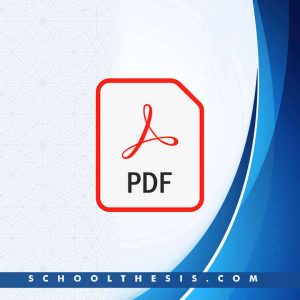Aspects of the Phonology of Kúrámá Language

Aspects of the Phonology of Kúrámá Language
Chapter One of Aspects of the Phonology of Kúrámá Language
Introduction
General Background
Kúrámá language is indigenous to Nigeria with a little over 40,000 speakers (2000 estimate). The alternate names to Kúrámá are Akurmi, Akurumi, Azumu, Bagwama, Bukurumi, Tikurami. These alternate names signify one aspect or the other of the Kúrámá term. For example – Tikurami means “the language”, Bikurumi means “a speaker” and Akurumi means “the people”.
Kúrámá is located and widely spoken in Kaduna state in the north-western region of Nigeria.
Historical Background
Back in the 13th.C in a place called Bikurimi in Kano (the northern part of Nigeria), the Kúrámá people migrated from their settlement alongside with some other ethnic groups, like Beguanda, Kutembe (which is now Kachia, Kaduna state) for north-western region and were allowed in the Fidaro base. From here, they extended to their various locations which they now occupy. We now have places like – Kaduna, Plateau and Bauchi states in which the Kúrámá speakers can be located.
More so, the Kúrámá people are mostly found in the Lere local government area of Kaduna state.
Socio-Cultural Profile
Under socio-cultural activities, we have marriage ceremony, mode of dressing, religion and culture. These shall be discussed in relation to Kúrámá setting.
Marriage Ceremony
The normal mode of obtaining a wife was and is by agricultural service including cash and payment of other things as requested by the bride’s parents or guardians. A bride’s price of 40,000 – 60,000 cowries, one basket of rice, and one pot of honey. These gifts are given during the concluding rites.
Mode of Dressing
The dressing of the Kúrámá people is almost the same with the Hausas. Therefore, you find it difficult to distinguish a Hausa woman and Kúrámá woman in the area of dressing. The women also cover their heads.
Religion
The Kúrámá people practice two religions basically in which the second one is splitted into two, and these shall be highlighted as we move further.
Firstly, they have what is called – Ancestor worship. This is done when someone dies and after one or two years, the people in the family of the deceased will gather together to celebrate the dead. Another variation under this, is small, and is that the followers of Kúrámá that are called ‘Uchindu’ celebrates their own in a different way.
Secondly, we have the set of people that don’t believe in the ancestor worship and these sets of people are referred to as Christians and Muslims.
Culture
The Kúrámá culture is not different from any other northern group. Just as the language came out from the HH
Hausa region, it also shares similar culture with the Hausa. Due to western interference, there is now variance.
Initially, the younger ones honoured the elderly ones. More so, there was demarcation between the males and females. This happened especially when they came back from farm. The males did not mingle with females. Therefore, they frown at seeing the males and females mingling together.
Socio-Linguistic Profile
The people of Kúrámá are very patriotic and loyal to their language, as such, a researcher will be unable to locate them if he/she regards them to be Hausa.
The language is used in the following ways as listed below;
- The language of home, that is, Kúrámá language is used strictly at home as means of communication and instruction between the children and their parents.
- Commercial activities; the language is used for transacting business in the market place of Kúrámá communities.
- The language at school; Kúrámá language is used at the lower learning in school which enables the pupil to understand the alphabets that are present in the language.
Genetic classification
The Kúrámá language is a language within the sub-groupings of the Benue-Congo.
WEST ATLANTIC KRU MANDE GUR BENUE CONGO KWA
WEST PLATEAU KAINJI EAST KAINJI
NORTHERN JOS
KAURU
KÚRÁMÁ
Retrieval from
“http://en.wikipedia.org/Wiki/kuramalanguage Page 1
Theoretical framework
The theoretical framework of this study is generative from the work of Chomsky and Halle (1968).
The ‘generative’ model of language which appeared during the 1960s put greater emphasis on the need for a linguistic analysis to have explanatory power, that is, to explain adequately what the native speaker intuitively ‘knows’ about his language (1984).
Data collection
The method adopted for collecting data for the study is the contact method and is also known as informant method.
The collection of the data was via the Ibadan word list of 400 basic items and tape recorder was used to have the voice of the informant.
Below is brief information about my major informant for this work:
Name – Mr. Yohanna Yusuf
Age – 25years
Sex – Male
Occupation – Military officer
Numbers of years lived in the village – 22years
Other languages spoken – Hausa and English
